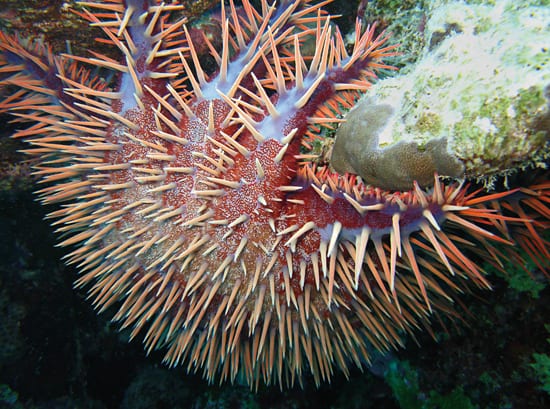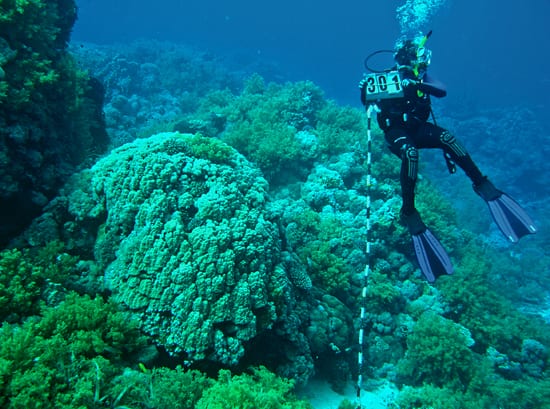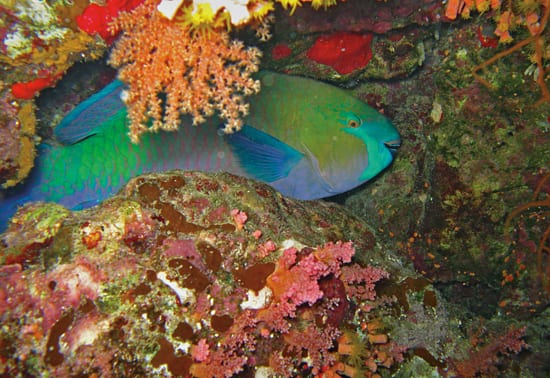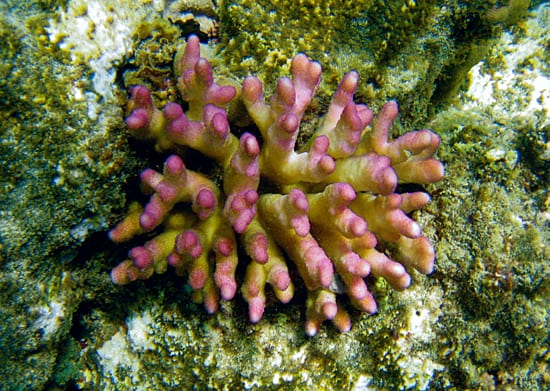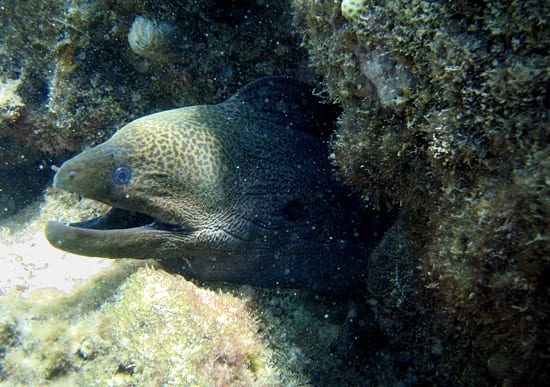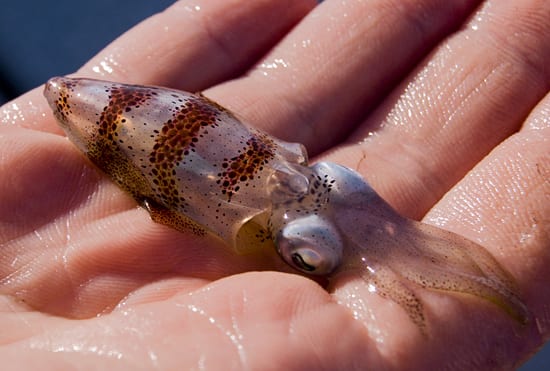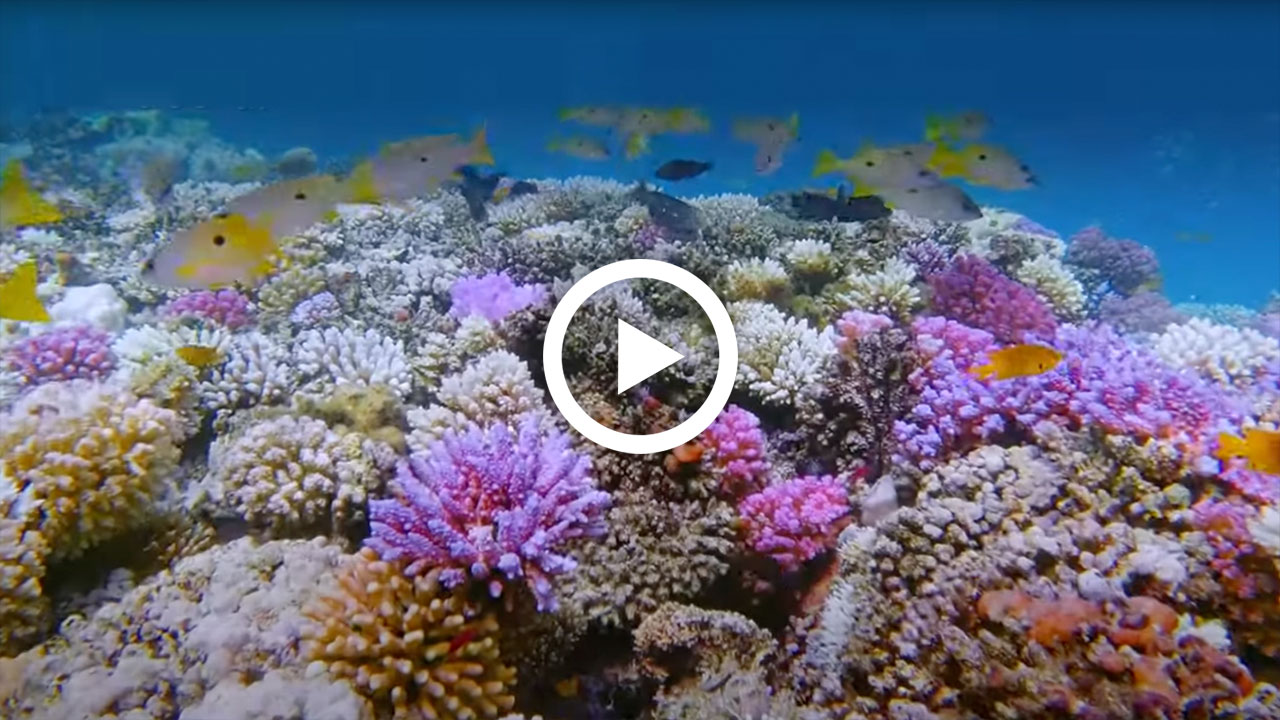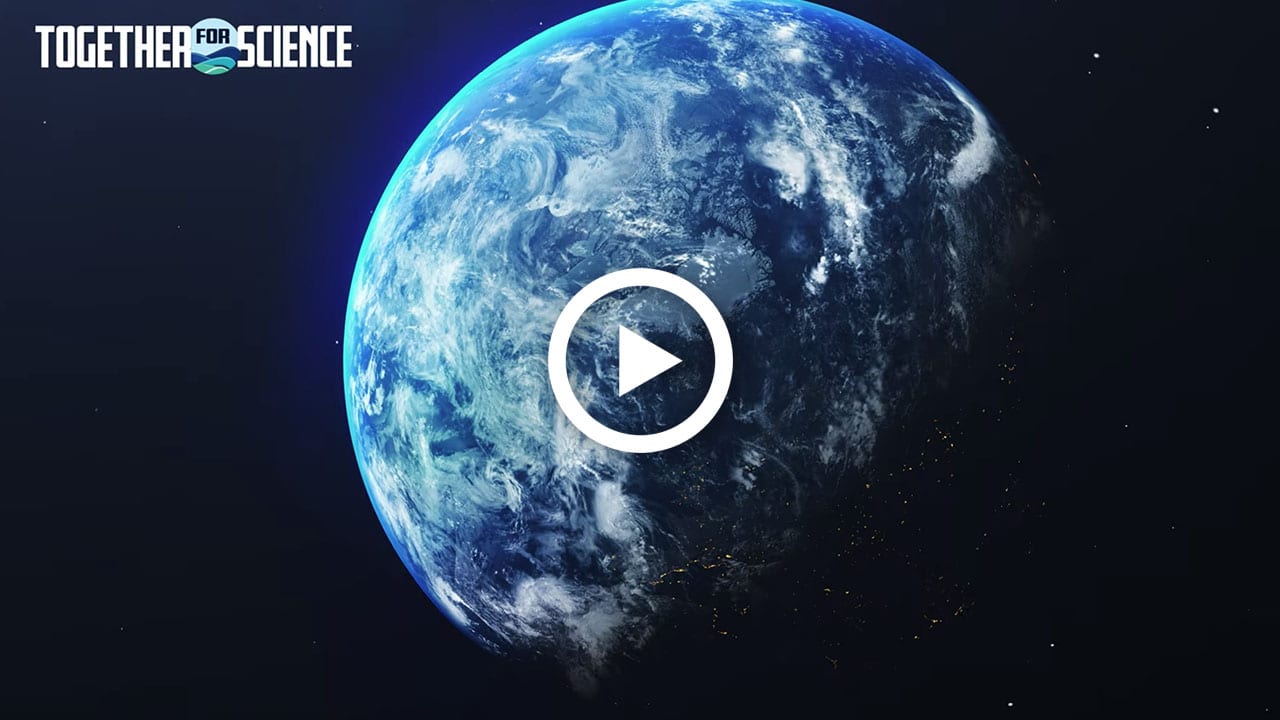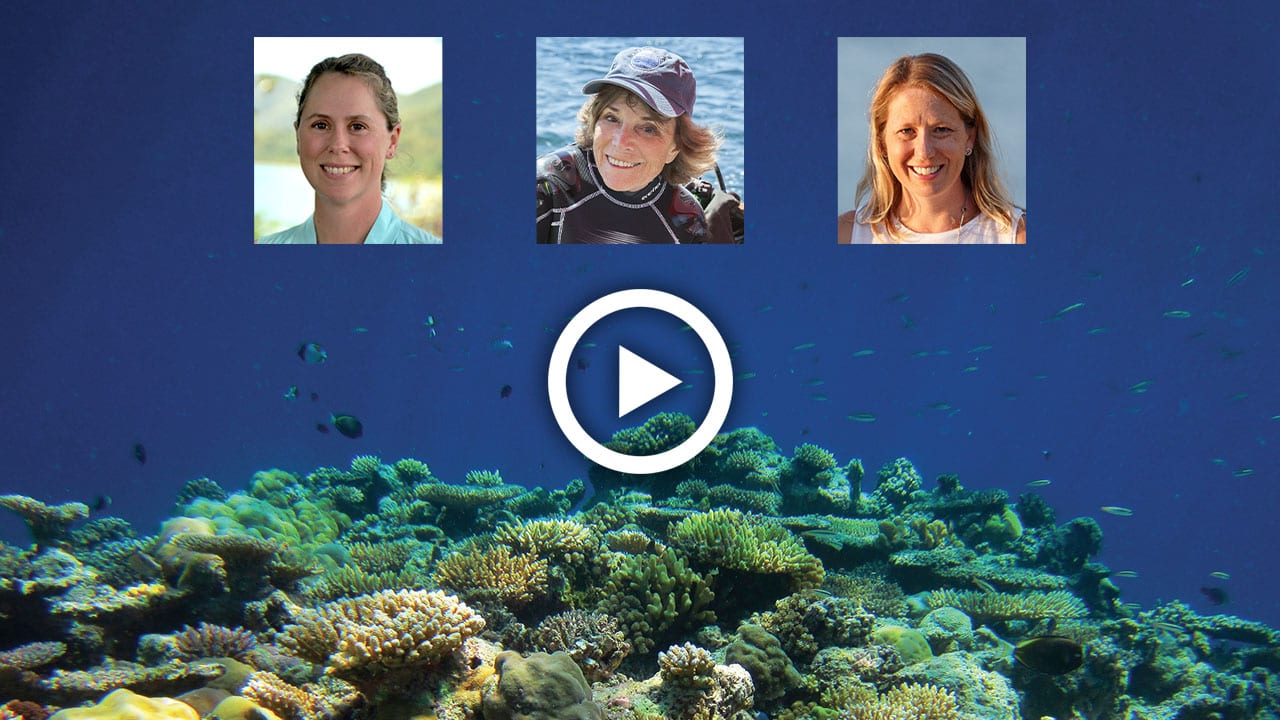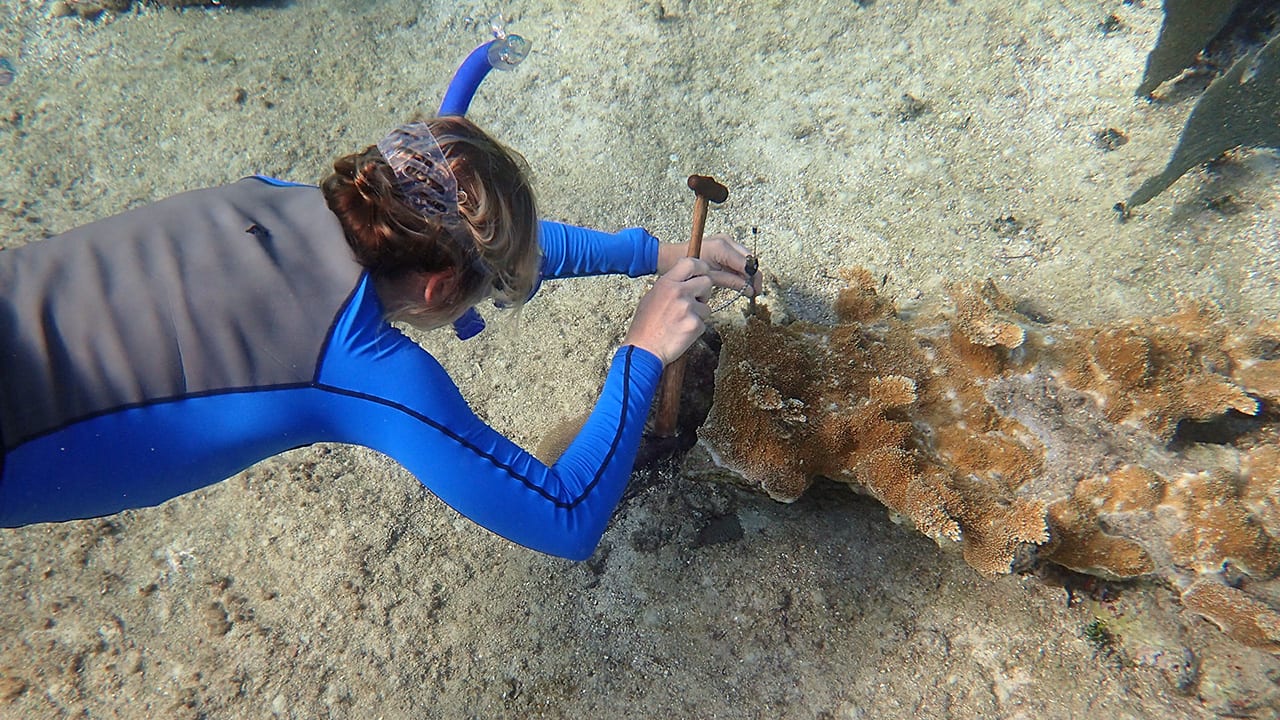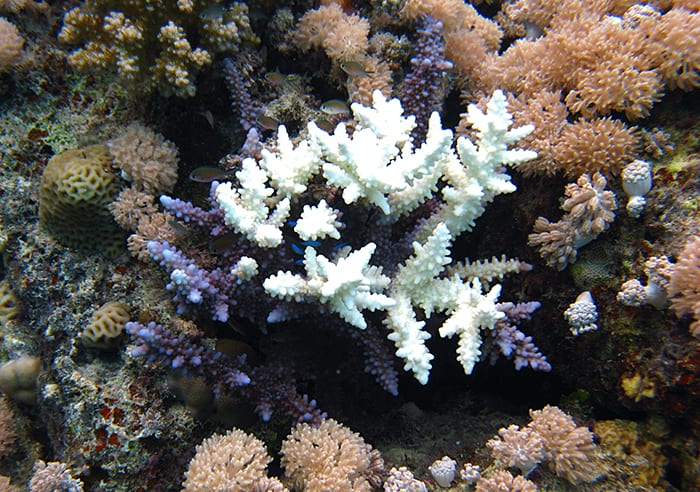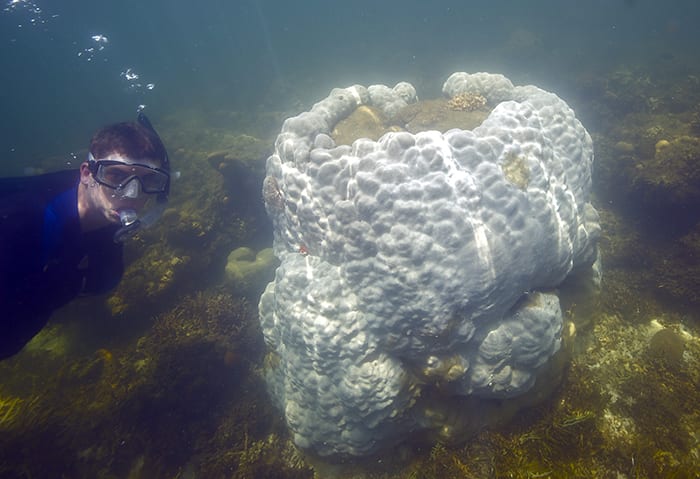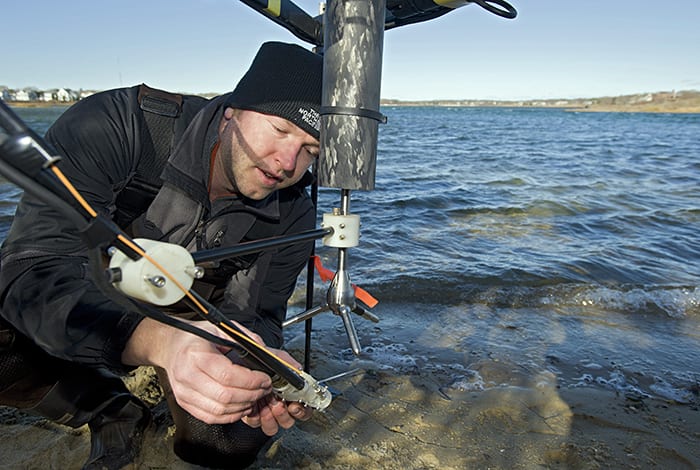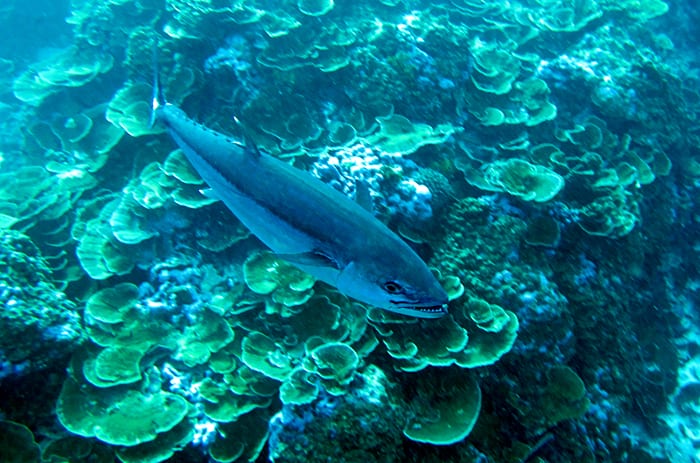Multimedia Items
Slow motion destruction
Gliding on hundreds of tiny suction-cup feet, A Crown-of-thorns sea star roams the reef, consuming immobile corals and leaving bare coral skeleton behind. Common in the Pacific and Indian Oceans…
Read MoreMeasuring corals in the Red Sea
Through a research agreement with King Abdullah University of Science and Technology, WHOI scientists are studying coral reef ecosystems, fisheries, and water circulation along Saudi Arabia’s Red Sea coast. The…
Read MoreFood by day, shelter at night
At night, illuminated by the photographer’s flash, a brilliant 18-inch-long parrotfish hides in a niche surrounded by equally brilliant corals in the Red Sea. In daylight, parrotfishes feed on coral,…
Read MoreReaching for sunlight
WHOI scientist Konrad Hughen, who studies tropical climate change recorded in coral skeletons, spotted this 15-cm (6-inch) “rosy finger coral” (Stylophora pistillata) at 2-3 meters depth while surveying the health…
Read MoreMeet the neighbor
Konrad Hughen (in WHOI’s Marine Chemistry and Geochemistry Department) was diving in just 2-3 meters (6-9 feet) of water when this Red Sea resident came out to watch. Hughen studies…
Read MoreCentral American Beauty
A baby reef squid found its way into the nets of WHOI researchers as they worked in the waters around Belize to study the connectivity of reef ecosystems. Biologists and…
Read MoreHow do corals form colonies?
If you stare at just one spot on a coral reef, your eyes could be seeing more than 1,000 animals per square foot. That’s because the thing that makes up most of these marine ecosystems are tiny living animals called coral polyps, which exist on the surface of reef formations. Hundreds or thousands of identical polyps live together to form a colony. So, how do these tiny creatures build and maintain such large colonies?
Read MoreTogether For Science
It all starts with one drop, one insight, one eureka moment that can ripple across the planet. Every atom, particle, and molecule means we’re connected. Every step we take, every discovery we make, shapes our future. When faced with uncertain times, we turn to science for answers. And this is an uncertain time. Will our leaders rise to the challenge of climate change? Will we have the vision and the technical prowess to end hunger through sustainable fishing and farming of the ocean? Will rising seas consume our coastlines? Will understanding outpace industrialization in time to save coral reefs, right whales, and threatened ecosystems around the globe? For more than 90 years, Woods Hole Oceanographic Institution has been on call for our oceans. Driving discovery and providing the fundamental knowledge needed to respond to disasters, shape enlightened policies, and inspire individual action. It starts with one drop. One insight. One moment. Advancing together for uncertain times. Together for science. Together for our ocean, our planet, and our future.
Read MoreOcean Encounters: Corals in Crisis
Worldwide, corals are struggling to survive, decimated by pollution, destructive fishing practices, and climate change. Six years ago, a deadly coral disease outbreak started in Florida and has now made its way to the coral reefs in U.S. Virgin Islands, killing corals at an unprecedented rate. Can scientists help stop this underwater epidemic and contain its spread?
Read MoreSampling Coral Health
WHOI scientist Amy Apprill collects a small sample of an elkhorn coral in November 2017 during an unprecedented joint expedition with Cuban and American scientists to study the Gardens of the Queens in Cuba, one of…
Read MoreLiving Laboratory
The colors in coral come from symbiotic algae cells living inside individual corals organisms, or polyps. This “bleached” coral has expelled much of its algae in response to the stress of unusually…
Read MoreBleached and Barren
Researchers from the lab of WHOI scientist Anne Cohen are currently working on Dongsha Atoll in the South China Sea to study how coral reef ecosystems are affected by internal…
Read MoreProof of Concept
Matt Long sets up the prototype of his new eddy correlation hydrogen ion and oxygen exchange system (ECHOES) on Great Pond in Falmouth on a cold November day. Developed over…
Read MoreProtected Predator
A dogtooth tuna cruises above corals in the world’s second-largest marine reserve, the Phoenix Islands Protected Area (PIPA), which protects two interconnected ecosystems—the reefs around eight remote uninhabited coral atolls…
Read More
